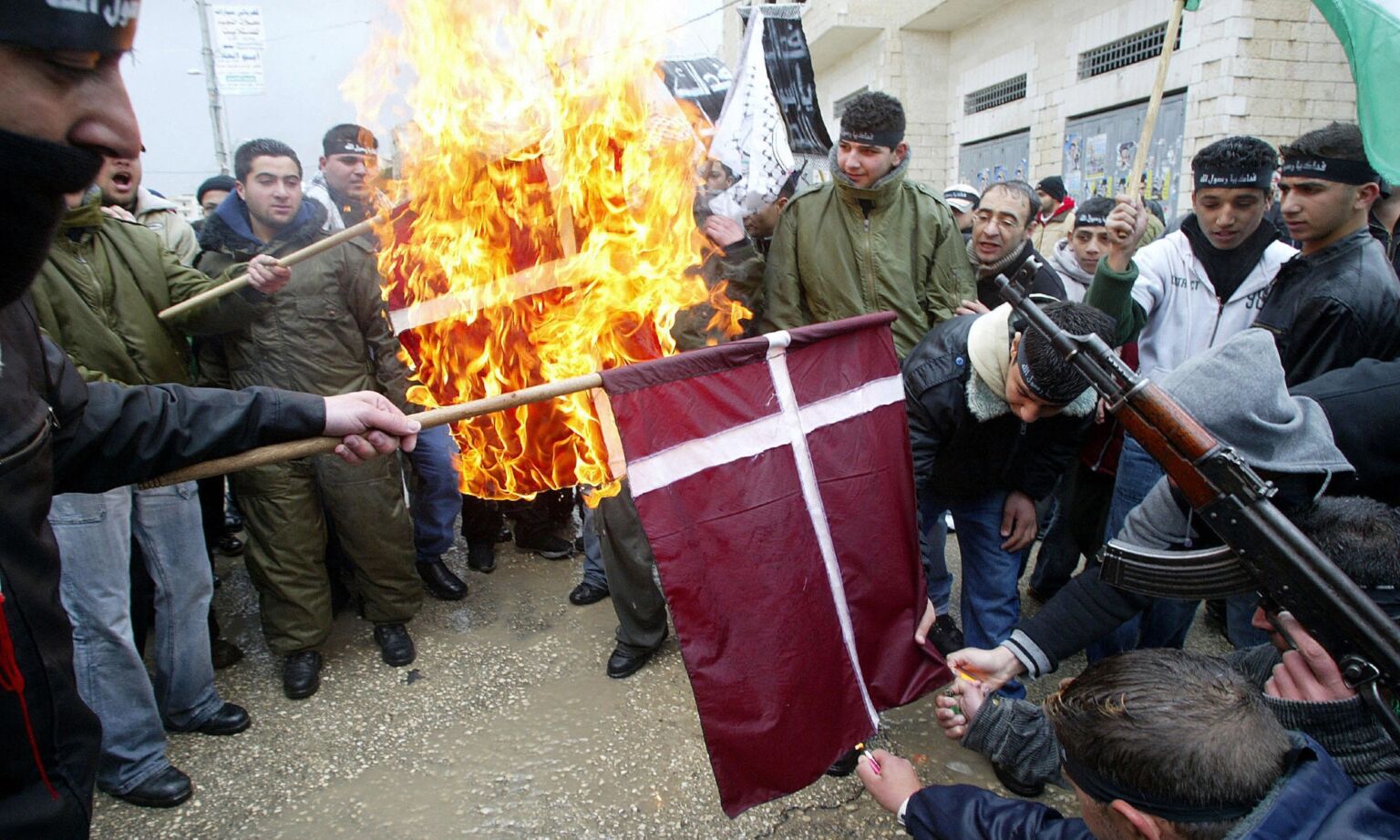
Long-read
How the West failed the test of the Danish cartoons controversy
Twenty years on, Europe has embraced Islamic blasphemy codes and abandoned free speech.
Want unlimited, ad-free access? Become a spiked supporter.
On 30 September 2005, 12 cartoons appeared in the Danish newspaper, Jyllands-Posten, under the headline, ‘The face of Muhammad’.
The headline was not entirely accurate. One of the cartoons made fun of the Jyllands-Posten editors for commissioning the series, while another showed Islamist suicide bombers being turned away from heaven. ‘Stop. Stop. We have run out of virgins’, ran the caption. At least Kurt Westergaard’s now infamous effort chimed with the title. He had drawn Muhammad wearing a turban containing a bomb, accompanied by the Muslim declaration of faith: ‘There is no god but God, Muhammad is the messenger of God.’ The cartoons were undoubtedly provocative, as indeed they were intended to be. They stood firmly in a long-standing, anti-clerical tradition of satire.
They were commissioned in response to reports that Danish children’s author Kare Bluitgen had been unable to find an illustrator for a book about Muhammad. It wasn’t hard to guess why. A rising tide of sometimes vicious Islamic intolerance had fomented an increasingly fearful, self-censoring climate throughout Europe. In the previous 12 months alone, Theo van Gogh had been murdered in Amsterdam by an Islamic extremist for making a film criticising Islamic societies’ treatment of women. Closer to home, a lecturer at the University of Copenhagen had been violently assaulted by a group of men after he had read sections of the Koran to non-Muslims during a lecture.
As a result, Jyllands-Posten’s senior editors saw the illustrators’ reluctance to illustrate Bluitgen’s book as a sign of growing Western tongue-biting on matters related to Islam. They wanted to establish two things: whether people were afraid of illustrating Muhammad and whether that fear was rational. And so culture editor Flemming Rose wrote to the 40-odd members of Denmark’s union of newspaper illustrators, asking them to ‘draw Muhammad as you see him’. Just under half – 15 in total – responded, with three of those rejecting the commission.
After some editorial humming and hawing over whether to proceed with the cartoons, Rose and editor-in-chief Carsten Juste finally decided to press ahead in late September, moving the drawings from the news section, where they had originally been assigned, to the culture section. The cartoonists’ efforts were accompanied by editorials from Juste and Rose. Juste attacked certain self-appointed Muslim leaders’ ‘sickly oversensitivity’ to criticism. Rose declared that in a free society, ‘everybody must be willing to put up with sarcasm, mockery and ridicule’.
The Jyllands-Posten editors must have expected a response of some sort. Perhaps even a spot of controversy. After all, tensions were high. Alongside the surge in increasingly intolerant Islamic activism, the so-called war on terror, the US-led response to al-Qaeda’s attack on the Twin Towers and the Pentagon in 2001, was raging. Talk of a ‘clash of civilisations’, to use Samuel Huntington’s infamous phrase, was in the air. Moreover, violent Islamists had launched a terror attack in Madrid in March 2004, bombing a train, killing 191 and injuring over 2,500. Then, in London in July 2005, Islamists bombed the Underground and a bus, killing 56 and injuring nearly 800. Even so, Juste and Rose surely did not anticipate the global firestorm that was soon to consume their lives.
The initial reaction in Denmark was muted. But in the months that followed, it turned into a full-blown international crisis. Jyllands-Posten staff and the cartoonists were subject to countless death threats – and later actual attempts on their lives. A dozen countries from the Middle East and beyond demanded an apology from the Danish government and a pledge to clamp down on Islamophobia. They organised a boycott against all Danish goods. Danish consulates and embassies were set ablaze. Numerous Muslim-majority nations took complaints to the United Nations. Towards the end of January 2006, violent demonstrations had erupted across the Arab and Muslim world. By the time the unrest had been brought under control, well over 200 people had been killed in clashes with security forces.
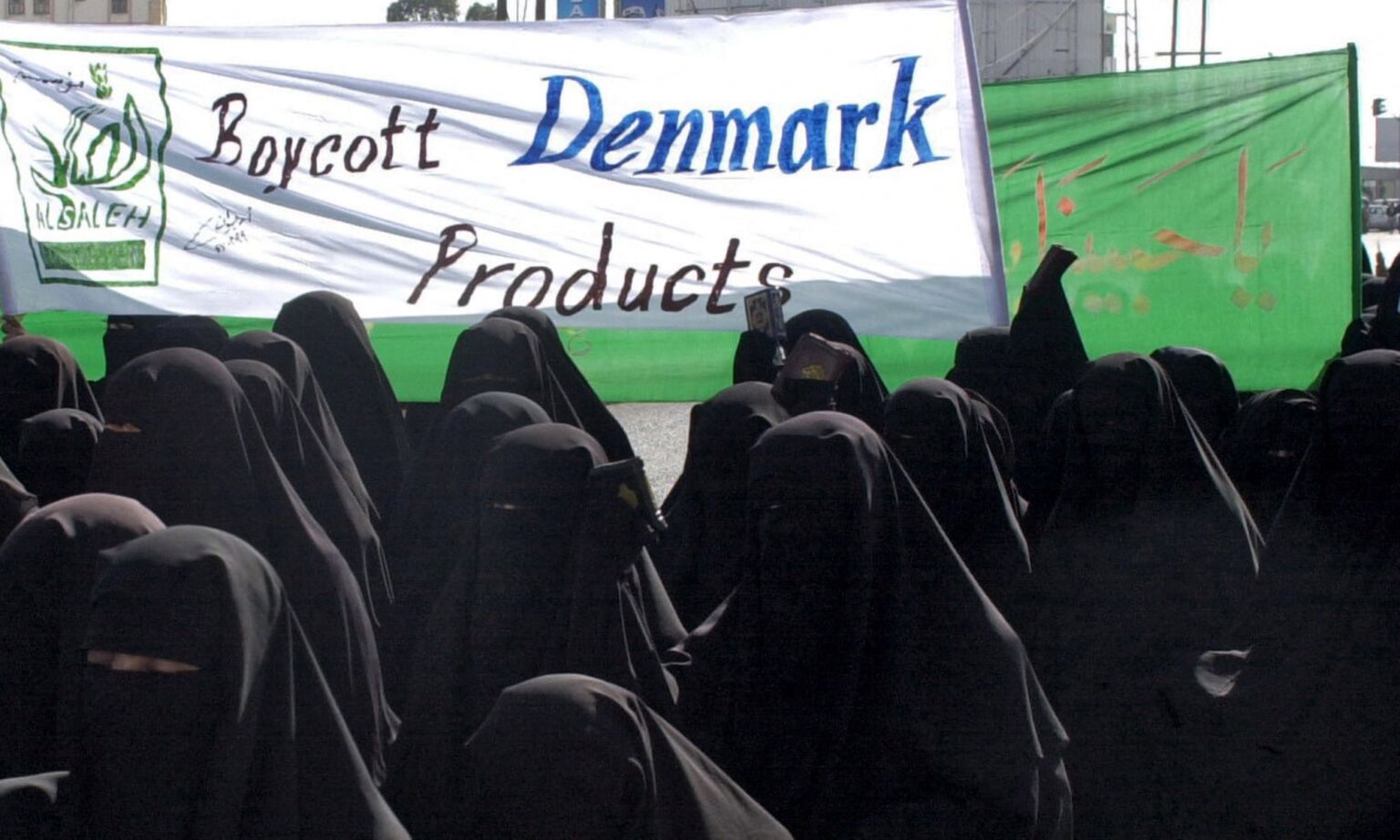
How did this happen? How did a handful of cartoons sequestered away in the culture section of a newspaper that few outside of Denmark had heard of lead to a global conflagration and hundreds of deaths?
The answer lies in the way in which the cartoons controversy drew deeply on cultural forces reshaping societies in the West and beyond. It was fuelled above all by an increasingly assertive and intolerant form of Islamic activism. This was exacerbated by Western elites’ abandonment of fundamental, universal freedoms, especially freedom of speech, and their embrace of cultural relativism and identity politics.
These were not sudden developments. Various strains of Islamism, intolerant and reactionary, had been on the rise globally since at least the 1970s, with Saudi Arabia and a newly minted Islamic Republic in Iran promoting their own competing visions of the Islamic good life.
At the same time Western elites had been undermining basic liberal, democratic principles in the name of protecting people’s feelings for decades. They had been increasingly arguing that, in so-called pluralistic Western societies, it was necessary to respect others’ beliefs. What amounted to a call for more and more censorship was increasingly being dressed up as a way to preserve social harmony. No one would be challenged and no one would be offended.
This slow, veiled abandonment of the West’s foundational ideals, in the name of plurality, diversity and multiculturalism, provided fertile ground for the further growth of hardline Islam. It effectively empowered those seeking to forcefully assert their religious, ethnic identities in public and silence their critics.
The Muslim protests against Salman Rushdie’s Satanic Verses in the autumn of 1988, culminating in the Ayatollah Khomeini’s fatwa against its author in early 1989, had already brought these trends to the surface of public life. Young-ish Muslims in Britain and increasingly beyond, increasingly embraced their religious identities in an ever-more assertive, hardline way, and staged anti-Rushdie protests and ritual book burnings. And rather than rallying to Rushdie’s side amid the ever-present threat to his life, many Western liberals slowly but surely sided with his would-be silencers. They clearly felt that the upset feelings of Muslims – or at least those claiming to represent Muslims – outweighed freedom of expression. That, at some level, Rushdie had brought the fatwa on himself. In the years that followed, so-called hate-speech laws proliferated, and talk of banning anything deemed ‘Islamophobic’ – a term that was itself coined in the 1990s – ramped up. If the Rushdie Affair was an inflection point, the Muhammad cartoons controversy was an entrenchment.
What’s striking looking back at the Muhammad cartoons controversy 20 years on, is just how cynically a minority of offence-seeking Islamic hardliners managed to exploit the Jyllands-Posten cartoons to advance their calls for censorship, for a de facto Islamic blasphemy law. Indeed, if it had not been for the efforts of a handful of imams and activists in Denmark, and politicians and religious authorities in Middle Eastern and Arab nations, it is unlikely the Muhammad-cartoons controversy would have exploded in the way that it did.
After all, in the first few days that followed the cartoons’ publication, nothing really happened. There was no spontaneous outpouring of anger from Denmark’s then 250,000-strong Muslim population. After all, Muslims are not a uniform bloc ready to erupt at the hint of perceived offence.
Yes, the depictions of Muhammad in Jyllands-Posten might have violated certain 17th-century prohibitions in certain strands of Islam. But most Muslims living in Denmark, while perhaps balking at their faith being the target of ridicule, would not have been up in arms. Many had migrated from secular Turkey in the 1970s. Others had fled Islamic regimes in the Middle East and elsewhere, precisely because of their use of religious authority to repress and control the population. Moreover, given the popularity of Muhammad illustrations in Islamic art collections, many Muslims are not that bothered by such graven images at all.
What initial protests there were in Denmark were limited to the activities of a small group of mosque activists and imams. Those causing most fuss were activists Ahmed Akkari, Ahmad Abu Laban, who had praised Osama bin Laden, and Raed Hlayhel, head of a Salafist organisation.
In the days after the cartoons were published, they tried taking legal action against Jyllands-Posten and organised a demonstration on 14 October. It was attended by fewer than 4,000 people. As Jytte Klausen writes in The Cartoons That Shook the World (2009), ‘There was no groundswell of support for the mosque activists and imams who led the charge against the newspaper and the government in Denmark’. Quite the opposite in some cases. Many Danish Muslims disliked the way extremists and hardliners had used the cartoons to posture as their spokespersons. As Syrian-Danish politician Naser Khader put it at the time, ‘What I find really offensive is that journalists and politicians see the fundamentalists as the real Muslims’.
The Danish imams and other activists weren’t getting a large amount of support from within Danish society. But they were attracting it from outside – that is, from religious and political authorities in Arab and Muslim nations.
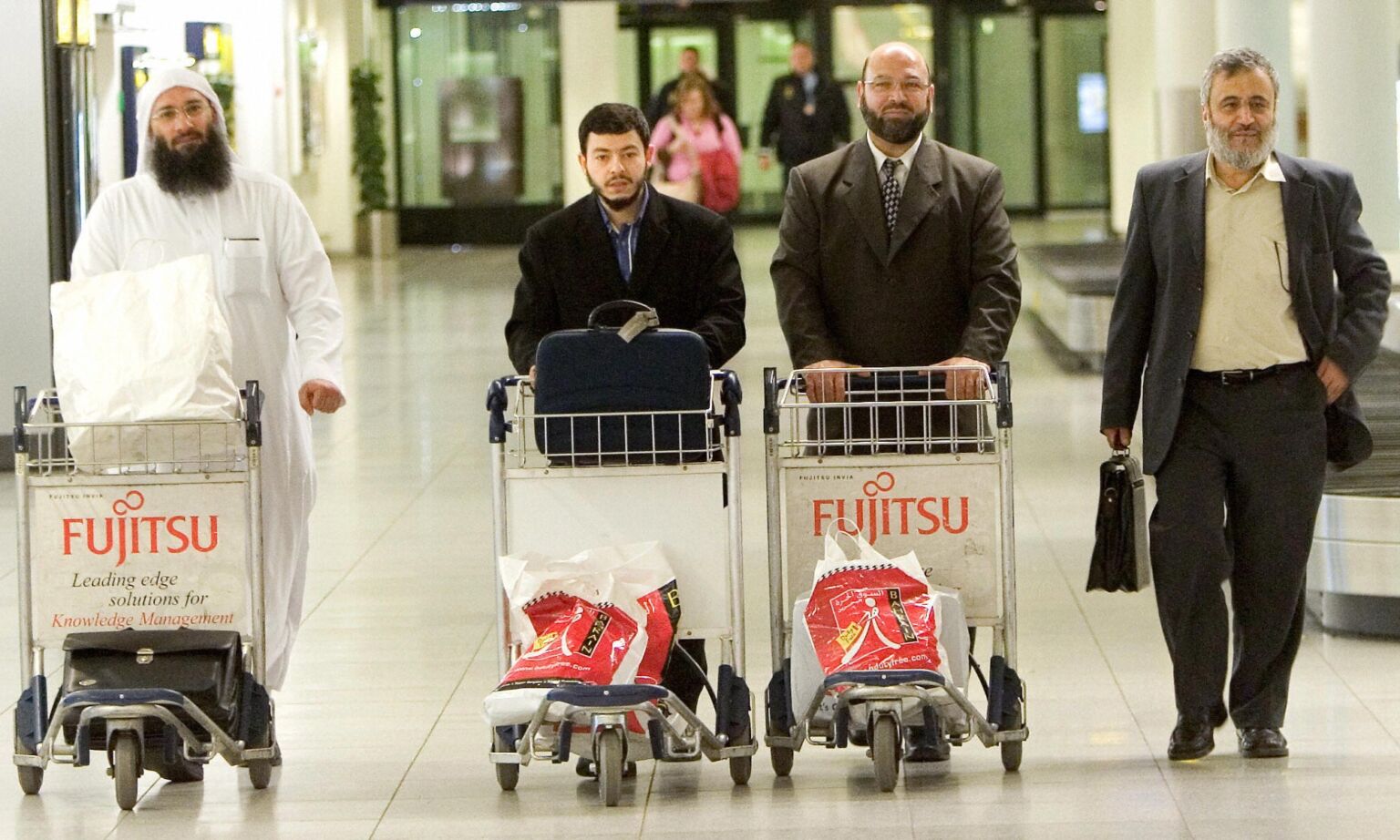
From early October onwards, the Egyptian government and several other Muslim countries had been putting pressure on Denmark’s then prime minister, Anders Fogh Rasmussen, calling on him to publicly apologise for what they called ‘a smearing campaign… against Islam’. Leaders of these largely autocratic states were using the Muhammad cartoons controversy in distant Denmark to serve domestic purposes, posing as defenders of the faith and outflanking growing domestic challenge from Islamic opposition movements; and to serve international purposes, insulating their regimes from criticism.
The Egyptian government of General Mubarak, battling the growing popularity of the Muslim Brotherhood at home, led the charge against Denmark. It announced to the press in November that the ‘caricature affair will be on the agenda at a special summit’ of the Organisation of Islamic Conference (OIC) in December 2005. In the weeks that followed that announcement, Egypt was joined by Pakistan, Saudi Arabia and Lebanon in a co-ordinated effort to pressure Denmark into some sort of capitulation.
The Danish imams were useful to the Middle Eastern regimes. Supposedly embodying the outrage and offence of an entire community, this clique was invited by Egyptian officials to bring the offending cartoons to the attention of Muslims in the Arab world. Throughout December, Hlayhel, Akkari et al met with countless scholars and Arab league officials in both Cairo and Beirut, where they circulated a dossier on ‘Danish racism and Islamophobia’. This didn’t only feature the cartoons, but also other potentially far more offensive images they claimed had been sent to them by the supposedly racist, Islamophobic Danes. It included one that portrayed Muhammad as a paedophile demon, another showing a dog raping a praying Muslim, and a third supposedly showing someone impersonating a Muslim while wearing a pig’s snout. This last one, it turned out, was actually a photo of a participant in a pig-squealing contest at a French festival.
But no matter, the Danish imams, armed with their very dodgy dossier, performed their role as offended Muslims well enough. The Arab League passed resolutions condemning the cartoons in November, ahead of the December OIC summit. Featuring 57 member states from four continents, the OIC had originally organised the summit to discuss a response to the Islamist terrorist attacks in Madrid in 2004 and London 2005. But it was the cartoons that dominated proceedings.
The final communiqué of the OIC was expressed in language that is all too familiar to us today. It came out against the ‘defamation of Islam and its values’ and called for this to be criminalised under international law as a form of ‘racism’. It complained of ‘Islamophobia’ and pointed to the ‘rising hatred against Islam and Muslims’ in the West. It also explicitly condemned ‘the recent incident of desecration of the image of the Holy Prophet Muhammad in the media of certain countries’ and stressed the ‘inapplicability of using freedom of expression as a pretext to defame religions’. Couched in the modern, Western jargon of Islamophobia, this was effectively a demand for the protection of Islam, and in many cases Islamic regimes, from freedom of speech – that is, freedom from criticism, challenge and ridicule. It amounted to a global call for an Islamic blasphemy code.
The momentum seemed to be entirely with those forces determined to clamp down on free speech. Muslim intergovernmental organisations imposed a trade boycott on Denmark from late December onwards. And multiple governments – Afghanistan, Bahrain, Bangladesh, Croatia, India, Indonesia, Iran, Jordan, Kuwait, Libya, Pakistan, the Palestinian Authority, Russia, Saudi Arabia, Syria, Turkey and the United Arab Emirates – criticised the Danish government for its inaction and condemned the cartoons. As indeed did the Pope.
The two competing centres of hardline Islam in the Middle East, Saudi Arabia and Iran, also became far more involved at the start of 2006. The Saudi government issued a constant stream of condemnation, while the notoriously anti-Semitic Iranian president, Mahmoud Ahmadinejad, launched a cartoon competition in response, calling on cartoonists to make fun of the Holocaust.
In late January 2006, the pressure finally told on both prime minister Rasmussen and Jyllands-Posten editor Carsten Juste. Amid trade boycotts, international condemnation and burnt-out embassies and consulates, Rasmussen told Danish media that such was his respect for ‘people’s religious feelings’, he ‘would not have depicted Muhammad, Jesus or other religious figures in such a manner that would offend other people’. While Rasmussen stopped short of apologising, Juste was more explicitly contrite. ‘In our opinion’, he said, ‘the 12 drawings were not intended to be offensive, nor were they at variance with Danish law, but they have indisputably offended many Muslims, for which we apologise’.
It was at this point, early in 2006, that the growing chorus of Islamic intolerance found an increasingly receptive audience among Western political and cultural elites. It served to expose the extent to which they had disavowed fundamental free-speech principles.
After the semi-apologies of Rasmussen and Juste, some newspapers and magazines in Germany, France and Spain did try to rally to Jyllands-Posten’s side, by republishing the cartoons in defence of free speech. Indeed, it was this act of solidarity that sparked the violent and ultimately lethal protests that roiled the Muslim and Arab world and beyond during February 2006. From Pakistan to Libya to London, the republication of the Muhammad cartoons effectively provided another occasion for offence-seeking hardliners to perform their hurt in front of Western embassies – as well as pursue other local grievances. In too many cases, security forces restored order using brutal and sometimes lethal means.
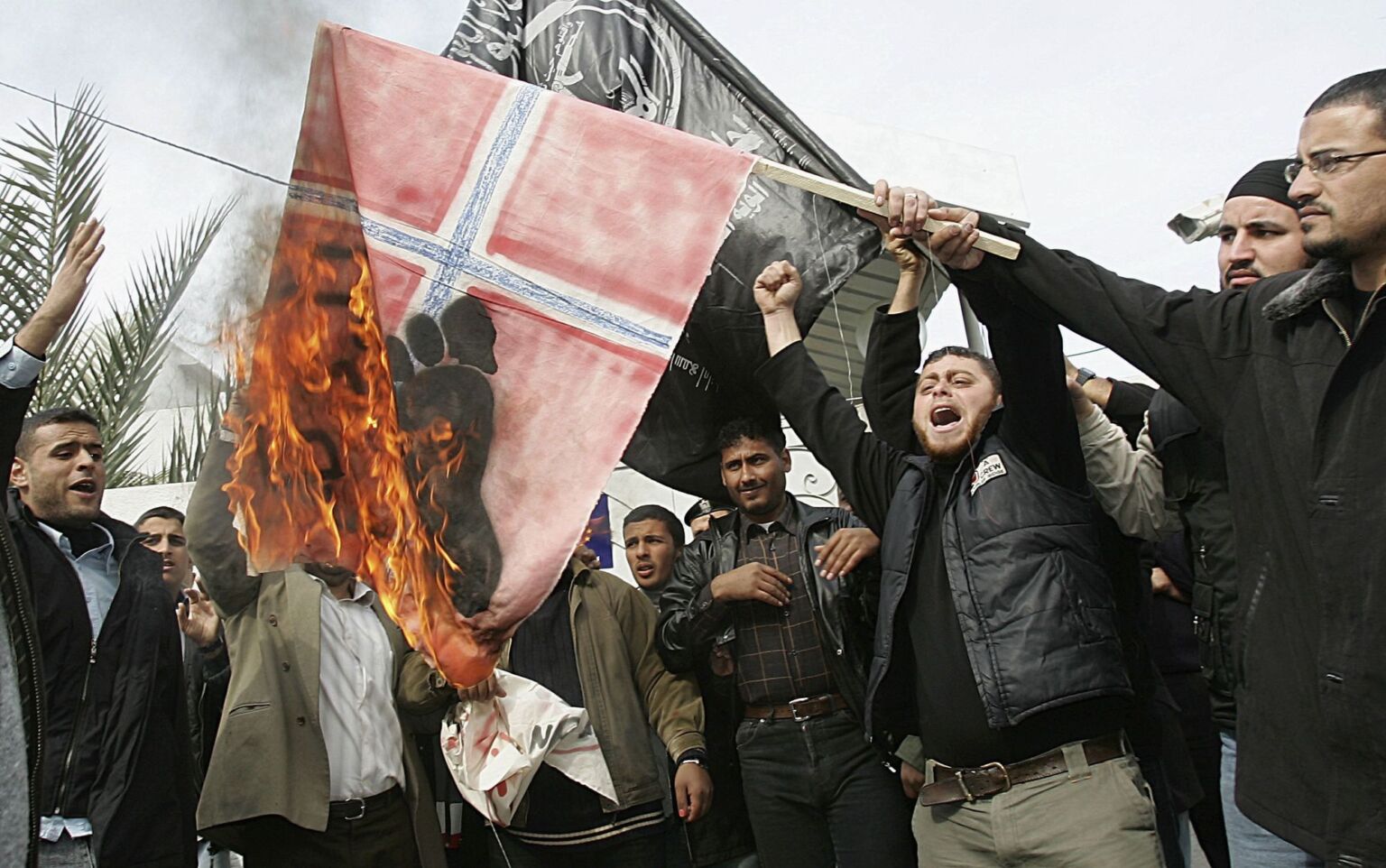
Nevertheless, some Western outlets did strike a defiant tone. In an editorial in Die Welt, Roger Koppel lamented the fact that ‘in a secular Western society, a prime minister and a newspaper had to issue an apology for exercising their right to satire’. Charlie Hebdo’s response dripped with acid. Entitled ‘Muhammad overwhelmed by fundamentalists’, its early February issue showed a cartoon of a weeping Muhammad saying ‘It’s hard being loved by jerks’. Several prominent Western intellectuals, including Salman Rushdie and Bernard-Henri Levy, put their names to a ‘Manifesto: Facing the New Totalitarianism’, also published in Charlie Hebdo. Railing against Islamism, the new ‘global threat’ after ‘fascism, Nazism, and Stalinism’, they called ‘for resistance to religious totalitarianism and for the promotion of freedom, equal opportunity and secular values for all’.
They were strong words, but they fell upon too many Western ears that had been intellectually deafened by years-long talk of pluralism, multiculturalism and the imperative of protecting identity groups from offence. Instead, liberal cowardice and bad faith prevailed, especially in the UK and the US, where not one major outlet dared to republish the cartoons. The European Union, echoing the OIC, complained that the cartoons were contributing to a rise in Islamophobia. Other leading politicians extolled free speech in principle, while simultaneously undermining it with the now all too familiar caveats. UK home secretary Jack Straw said: ‘There is freedom of speech… but there is not any obligation to insult or to be gratuitously inflammatory.’ Likewise, US State Department spokesman Kurtis Cooper said: ‘We all fully recognise and respect freedom of the press and expression, but it must be coupled with press responsibility.’ Pointing at those outlets republishing the cartoons, he added: ‘Inciting religious or ethnic hatreds in this manner is not acceptable.’
The implication was clear. The freedom to criticise and ridicule must be limited if it upsets or offends the beliefs of certain minority groups. And by certain minority groups, Western elites had one in particular in mind: Muslims.
In this way, Western identity politics dovetailed with the interests of reactionary hardline Muslims, Islamists and assorted autocratic regimes in the Muslim and Arab world. For different reasons, they were all demanding that Islam be ringfenced from all forms of criticism. They were dressing up old notions of blasphemy in the language of human rights and identity politics. Indeed, the cartoons had provided the OIC, now known as the Organisation of Islamic Cooperation, with what was to become its global mission – to explicitly combat what Western identitarians had now defined as ‘Islamophobia’.
The OIC could now point to the streets of Pakistan, Palestine or Nigeria, at the burnt-out Danish embassies and smouldering Danish flags, and say: ‘This is what happens if you mock the deeply held beliefs of Muslims.’ As one Guardian commentator put it in February 2006, ‘If you are bold enough to knowingly offend a community then you should be bold enough to withstand the consequences’. He did add that the identity bloc in question ought to express its displeasure within the law. But the logic was clear. Those speaking freely get what they deserve if they fail to self-censor. It was a logic that played itself out to horrific effect in January 2015, when Islamist gunmen slaughtered cartoonists and writers at Charlie Hebdo’s Paris offices – those, that is, who had once stood by the side of Jyllands-Posten – for the ‘crime’ of offending Islam.
By March 2006, the protests against the Danish Muhammad cartoons had died down. And with that, the controversy drifted away from news bulletins and, in the main, public consciousness. But its impact was deep. It had supercharged the intolerant ambitions of Islamic reactionaries and clerics determined to insulate their faith and themselves from criticism. And it had consolidated Western elites’ embrace of identity politics, of multiculturalism – of the need to protect and even celebrate the alleged values and beliefs of ethnic, religious blocs. Indeed, in a grim coda to the whole affair, in December 2023, the Danish government established a new blasphemy law. Known informally as the Koran law, it prohibited the desecration of religious texts – but everyone knew which particular text the authorities were thinking of.
It shows that we live in a world shaped by the forces that fuelled the Muhammad cartoons controversy. A world in which too many think censorship is necessary to maintain social cohesion. A world in which Islamic blasphemy codes are adopted in the name of combatting ‘Islamophobia’. A world in which genuine freedom and tolerance have rarely been as menaced as they are right now. It is a world that – in the spirit of the cartoons themselves – must be relentlessly challenged.
Tim Black is associate editor of spiked.
You’ve read 3 free articles this month.
Support spiked and get unlimited access.
Help us hit our 1% target
spiked is funded by readers like you. It’s your generosity that keeps us fearless and independent.
Only 0.1% of our regular readers currently support spiked. If just 1% gave, we could grow our team – and step up the fight for free speech and democracy right when it matters most.
Join today from £5/month (£50/year) and get unlimited, ad-free access, bonus content, exclusive events and more – all while helping to keep spiked saying the unsayable.
Monthly support makes the biggest difference. Thank you.
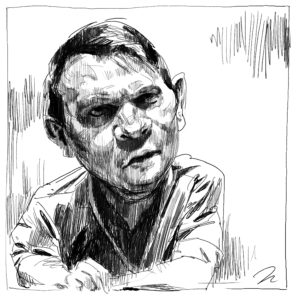

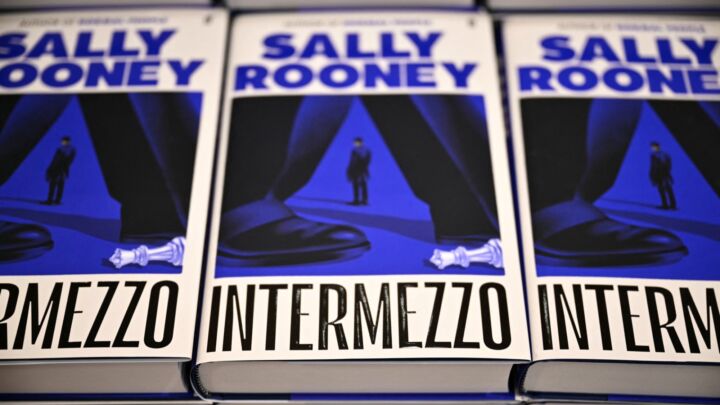


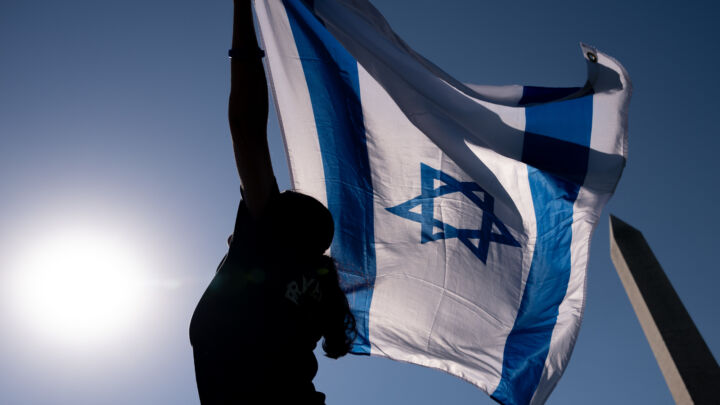
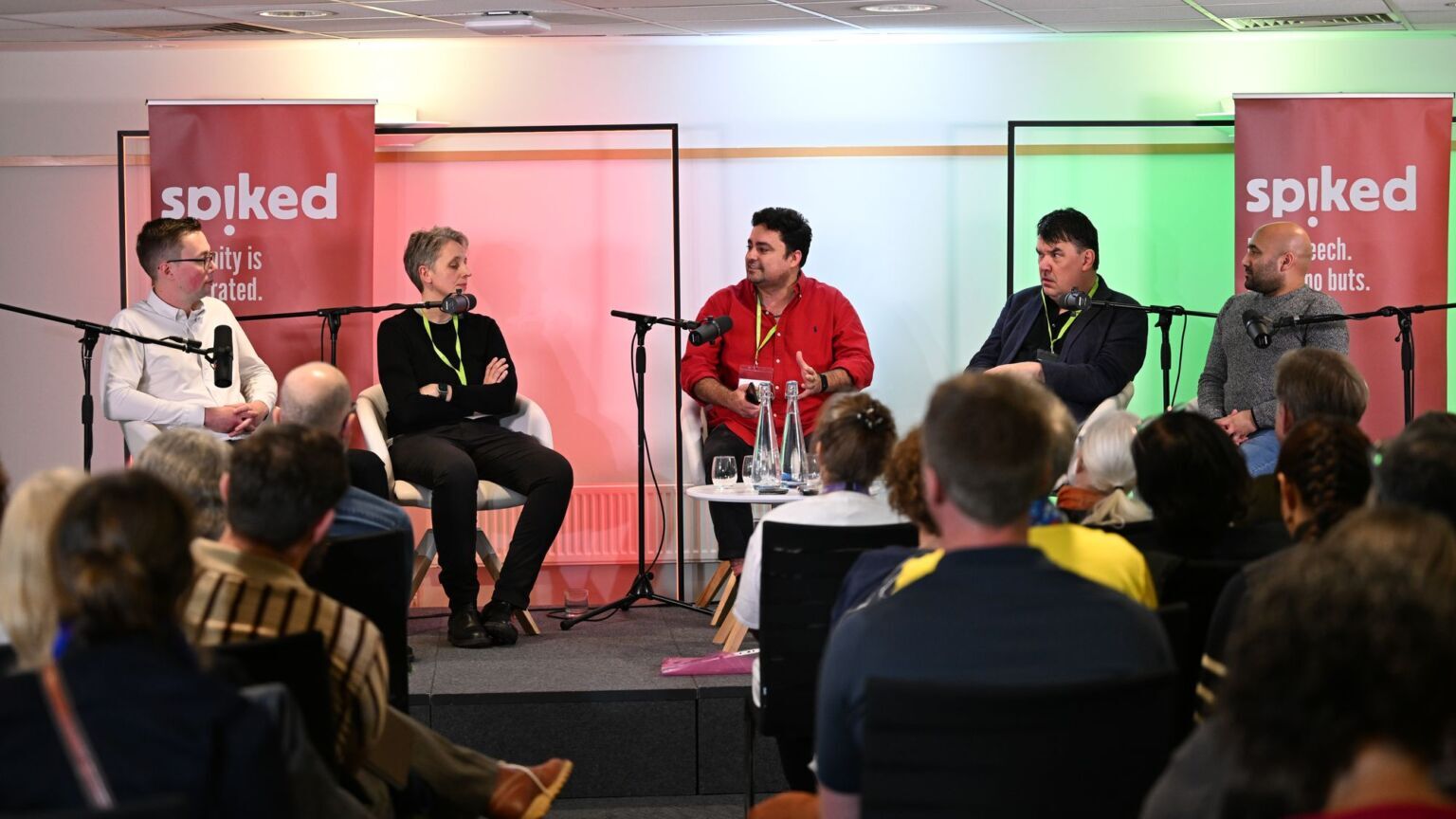
Comments
Want to join the conversation?
Only spiked supporters and patrons, who donate regularly to us, can comment on our articles.